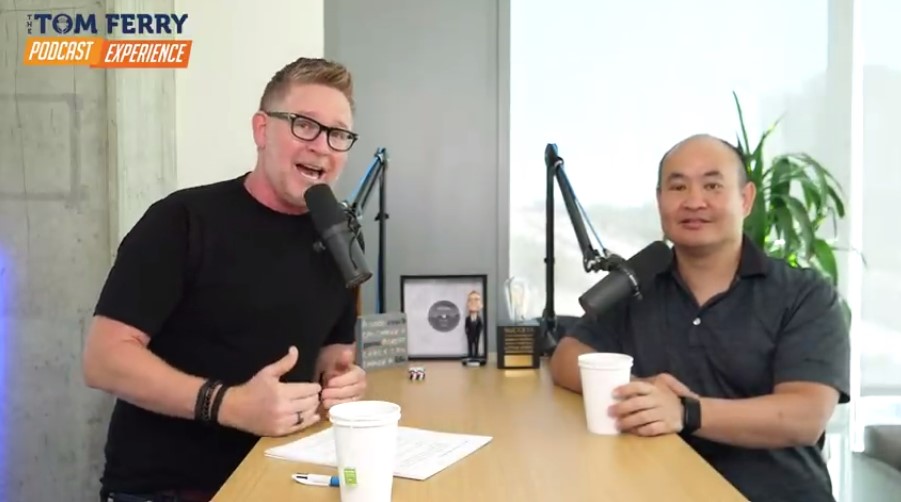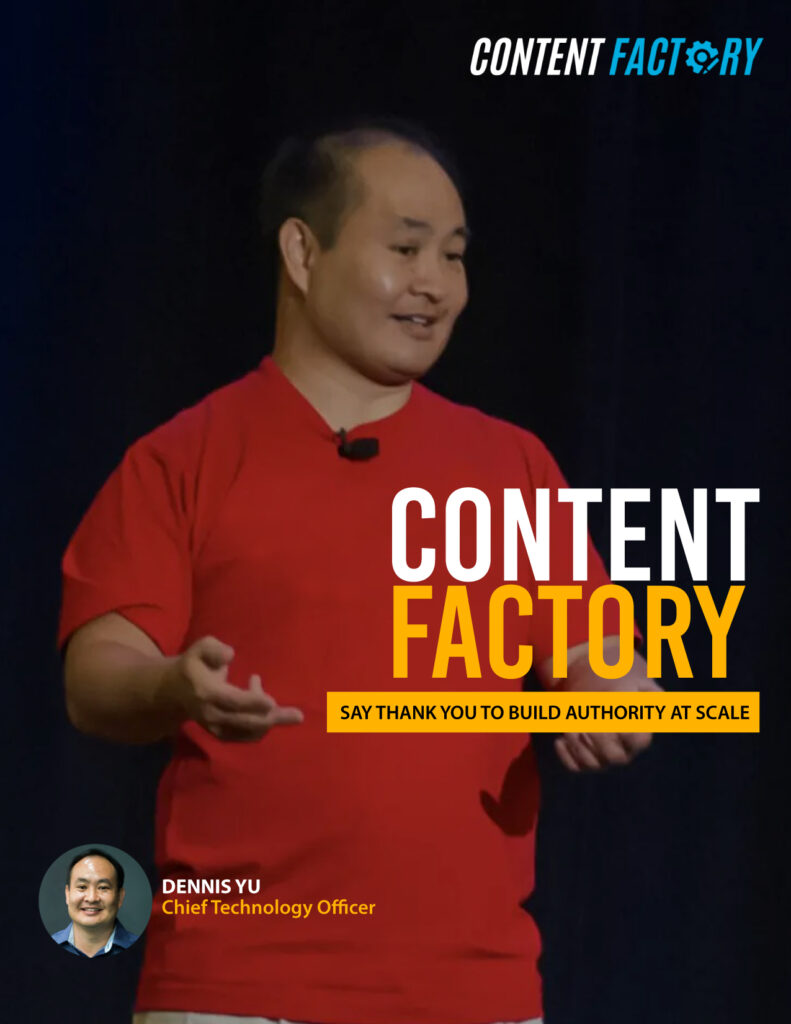This is an extract from Tom Ferry Podcat Experience with Jason Pantana and me, where we discussed video content creation and repurposing.

Video Recording and Editing
There are a lot of tools that will edit videos that are natively inside Facebook, TikTok, and Instagram. or integrate with email when you reply back.
But the key is literally just using video on any of the platforms.
So now, when someone messages me through LinkedIn, and you hit the reply, you can type words back, but you can also hit the camera and say, “ Tom, it was so awesome seeing you yesterday in Dallas and drinking rum together,” or whatever it might be.
Or if you have an iPhone, you reply back with text, but you could also hit the camera button and say, “Hey, I’m here in Puerto Rico; we’re having a great time.”
So you can do videos on every single platform.
If you’re making these little videos with your customers. with other people in the neighborhood, with podcasters, with the mayor, your favorite restaurant, whoever, you’re building your brand, your community.
You want that to live across all the other places. So make a little video with, say, Mark about how both have engaged behind the scenes. And then cut it up, and it’ll live on Twitter and YouTube. Transcribe it into a blog post using Descript and Auto.ai.
Content Repurposing

Turn it into Instagram stories. Reformat it vertically versus horizontally. That’s called content repurposing. So, you make the content once and then repurpose it to all these other channels; that way, you only have to make it once. That’s how you scale.
And then you have virtual assistants (VAs) do that. There’s software that will also do it. But the combination of VAs and software is how you do that. Then, you don’t have to be like, “Oh, I don’t have time to be on Snapchat.”, “I don’t dance.”, “I’m not gonna do TikTok.” The team of VAs will take your little snippets and push them out to all those other channels.
A lot of people think of social media as primarily a distribution channel where you engage, and that is true if you’re a consumer.
But we use them as content creation vehicles. You’re creating something with the lens, you’re creating an Instagram reel, you’re creating a one-minute video, you’re posting a story.
The key is that’s video creation natively. And if you post a YouTube video to Facebook, what do you think Facebook thinks about that? If it’s a YouTube link that you post to Facebook, you’re basically cheating on Facebook.
So if you want to get reach on Facebook, it needs to be a native Facebook video. If you want to get reached on YouTube, it needs to be posted as YouTube.
Video Backup
I make videos on my phone, which are stored inside the Photos app, natively inside the iPhone. I’ve got four services that I pay $10 a month too. So the photos are automatically uploaded to Amazon Photos, Google Photos, iCloud, and Frame.io, which is for video editing and coordinating with the VAs.
So yesterday, Mark Wagner and I were with Glen Vo, who is the Tom Ferry of dentists. Mark was getting his teeth done. And we’re capturing all this behind-the-scenes stuff. Then I’m moving to the next meeting, another call, a lunch appointment with these other people. I’m constantly going. So I don’t have time to go back to my phone and tell the VAs to say, “Oh, here’s the thing we have with Tom Ferry. Now edit it this way.”
So what happens is, because those videos and pictures are automatically uploaded to these four different services, the VAs are getting that, and they automatically know what to do.
All you have to do is create.
Some services are better than others. For example, Google and Dropbox are faster in uploading, Amazon has the best facial recognition though it doesn’t allow us to tag and be able to create notes. So use all of them and also just as a general backup.
And I’m one of those people where I don’t want to have it just in one place and potentially lose it, So I have everything backed up in multiple places – Sir John Templeton 1 0 1. You must diversify where you keep your assets.
